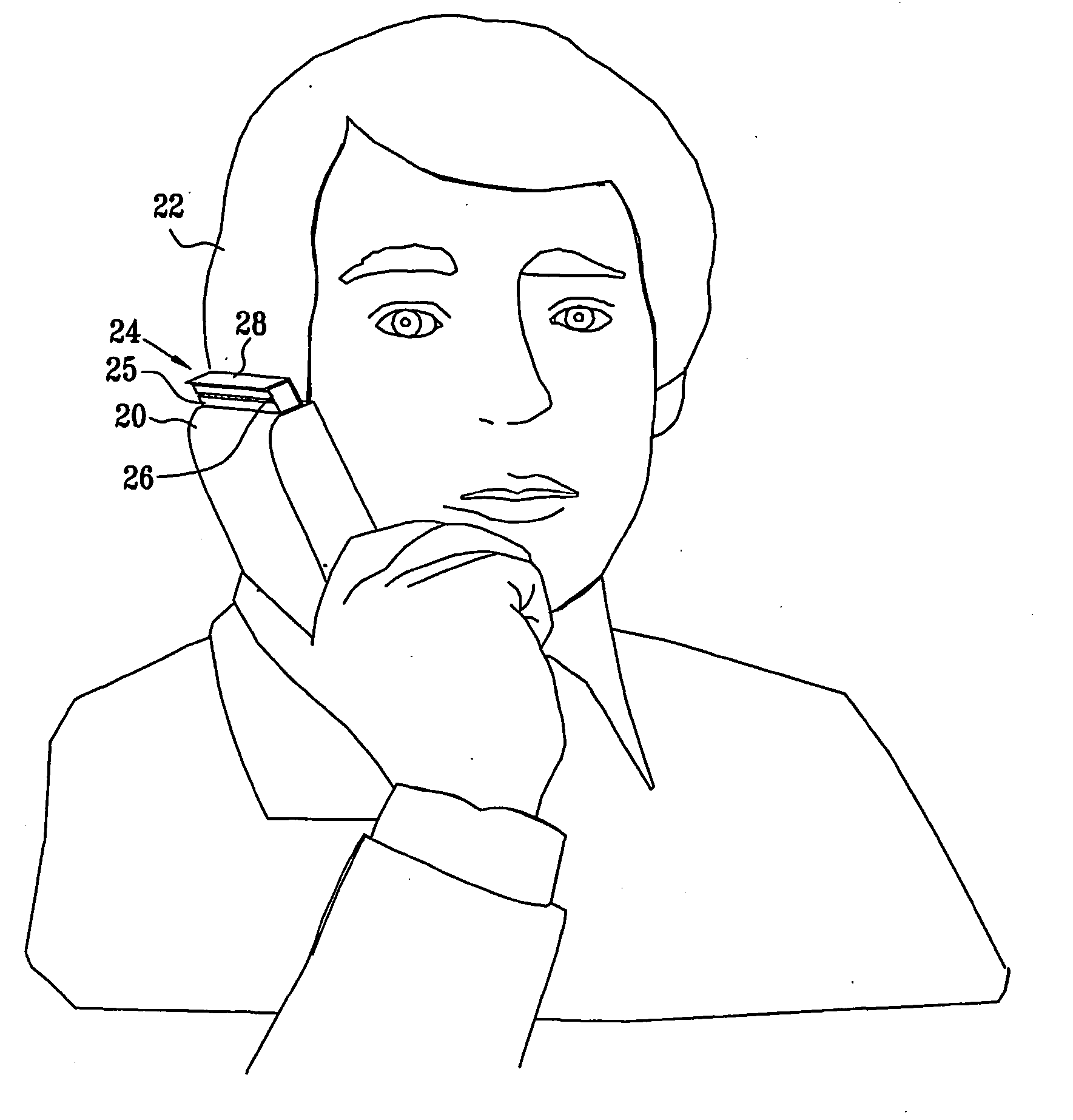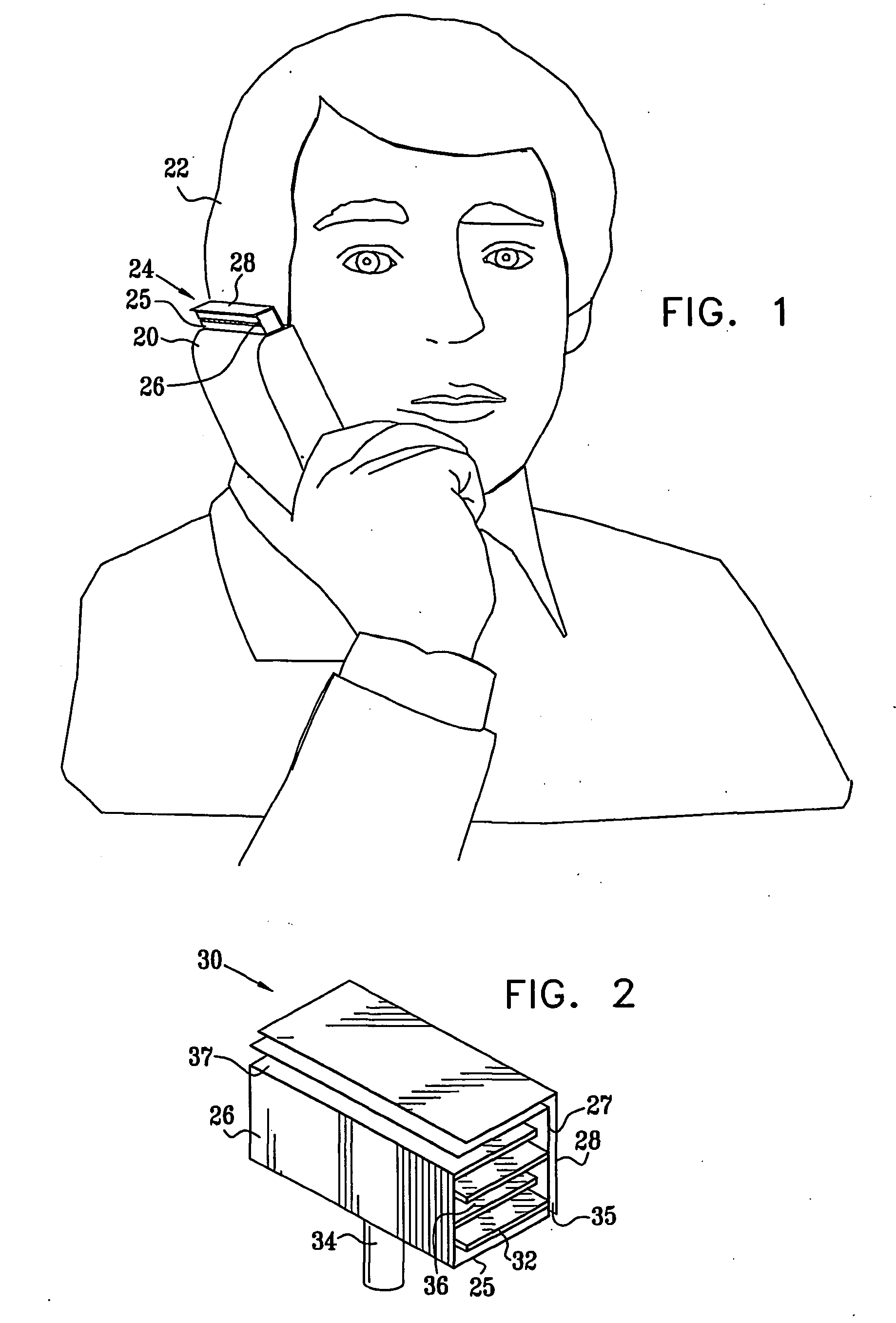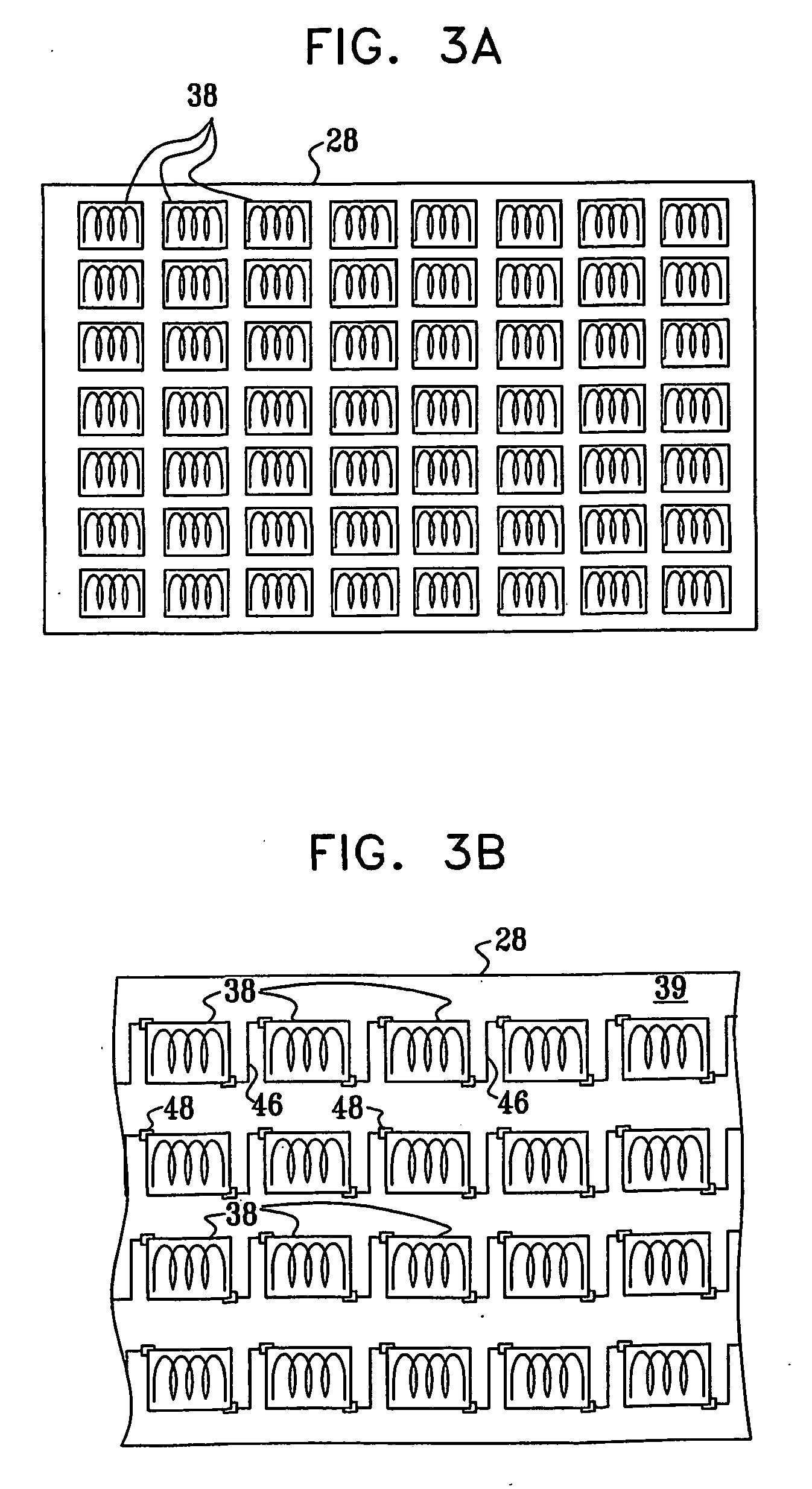Cavity antenna with reactive surface loading
a reactive surface and antenna technology, applied in the direction of elongated active element feed, resonance antenna, radiating element structure, etc., can solve the problems of brain cancer, adverse health effects of cellular phone use, and the use of cellular telephone radiation hazards
- Summary
- Abstract
- Description
- Claims
- Application Information
AI Technical Summary
Benefits of technology
Problems solved by technology
Method used
Image
Examples
Embodiment Construction
[0050]FIG. 1 is a schematic, pictorial illustration showing a cellular telephone 20 held next to a head 22 of a user, in accordance with a preferred embodiment of the present invention. Telephone 20 comprises an antenna assembly 24, made up of a feed structure 25 and an electrically-reactive shielding surface 28. Feed structure 25 has a front surface 26 and a rear surface, not seen in this figure. Here and in the description that follows, the “front surface” of the feed structure (or the antenna assembly) refers to the side of the assembly that is generally pointed away from head 22, as shown in the figure, while the “rear surface” faces toward the head. The rear surface of feed structure 25, which is typically conductive, and reactive surface 28 together define an asymmetrical cavity therebetween. Various realizations of the feed structure and the asymmetrical cavity are shown in detail in the figures that follow.
[0051] The combination of the asymmetrical cavity and the feed struc...
PUM
 Login to View More
Login to View More Abstract
Description
Claims
Application Information
 Login to View More
Login to View More - R&D
- Intellectual Property
- Life Sciences
- Materials
- Tech Scout
- Unparalleled Data Quality
- Higher Quality Content
- 60% Fewer Hallucinations
Browse by: Latest US Patents, China's latest patents, Technical Efficacy Thesaurus, Application Domain, Technology Topic, Popular Technical Reports.
© 2025 PatSnap. All rights reserved.Legal|Privacy policy|Modern Slavery Act Transparency Statement|Sitemap|About US| Contact US: help@patsnap.com



